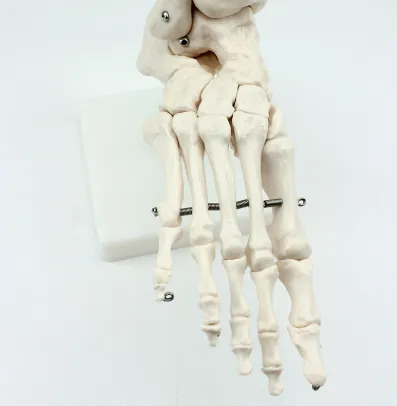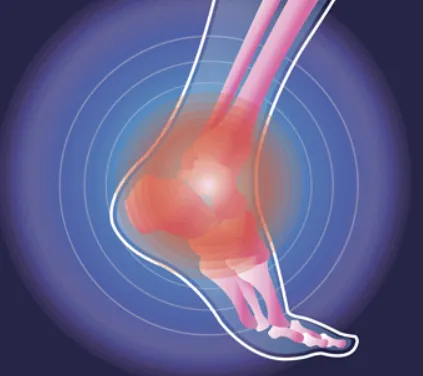The Complete Evidence-Based Guide to Foot Health: Putting It All Together
The Complete Evidence-Based Guide to Foot Health: Putting It All Together
After diving deep into the research, busting myths, and exploring safety considerations, it's time to synthesize everything into a practical roadmap. Here's your complete, evidence-based strategy for foot health—with toe spacers in their proper place.

The Big Picture: What We've Learned
Let's step back and look at the complete picture that's emerged from our evidence-based exploration:
The Root Cause Reality
The fundamental insight: Most foot problems in developed countries aren't genetic inevitabilities or natural aging—they're acquired biomechanical problems caused by decades of wearing inappropriate footwear.
As we explored in our foundational understanding of how modern shoes damage feet:
- 🦶 Your feet were designed for natural function: wide toe splay, ground contact, and unrestricted movement
- 👟 Modern shoes work against this design: narrow toe boxes, elevated heels, and rigid construction
- 🔄 The damage accumulates over decades: gradual deformation, muscle weakness, and altered movement patterns
- 🛠️ Many problems are reversible or manageable: with the right approach and realistic expectations
💡 The Paradigm Shift: Stop asking "What's wrong with my feet?" and start asking "How has my environment been constraining my feet, and how can I create better conditions for them to function?"
The Toe Spacer Truth
Through our comprehensive research review, we've discovered that toe spacers occupy a specific, valuable, but limited niche in foot health:
✅ What toe spacers ARE good for:
- Pain relief for bunions (well-documented)
- Temporary improvement in toe alignment
- Supporting exercise programs and active rehabilitation
- Managing interdigital skin problems
- Post-surgical alignment maintenance
❌ What toe spacers AREN'T:
- A permanent cure for structural deformities
- A proven athletic performance enhancer
- A treatment for conditions like plantar fasciitis
- A substitute for proper footwear and exercise
🎯 The optimal role: Toe spacers work best as supporting actors in a comprehensive foot health strategy, not as the star of the show.
Your Evidence-Based Decision Framework

With all this knowledge, how do you make smart decisions about your foot health? Here's your practical framework:
Step 1: Assess Your Current Situation
Health Status Check:
- 🟢 Healthy individual: Can safely experiment with toe spacers using proper protocols
- 🟡 Moderate risk factors: Should consider professional consultation before trying spacers
- 🔴 High-risk conditions (diabetes, PVD): Require medical supervision for any foot interventions
- ⛔ Active problems: Need professional diagnosis before any self-treatment
For detailed safety guidelines, see our critical safety guide.
Problem Classification:
- 📋 Normal aging changes: Focus on adaptation and accommodation
- 🎯 Treatable pathologies: May respond to conservative or medical interventions
- ⚖️ Mixed situations: Often benefit from professional evaluation to sort out what's what
For guidance on distinguishing aging from problems, see our aging feet and professional consultation guide.
🔍 The Key Question: Before trying any treatment, ask yourself: "Do I actually know what I'm treating, or am I guessing based on symptoms?"
Step 2: Set Realistic Expectations
For Toe Spacers Specifically:
Realistic Expectations:
- Symptom relief and improved comfort
- Temporary alignment improvement while wearing
- Enhanced effectiveness of exercise programs
- Gradual adaptation over weeks to months
Unrealistic Expectations:
- Permanent structural "correction" from passive use
- Immediate, dramatic transformation
- Universal solution for all foot problems
- Replacement for other necessary interventions
⚖️ Expectation Management: The gap between expectations and reality is where disappointment (and wasted money) lives. Set expectations based on evidence, not marketing.
Step 3: Build Your Comprehensive Strategy

Based on our research, here's the evidence-based hierarchy for foot health:
🥇 Priority 1: Environmental Foundation
- Proper footwear: Wide toe box, zero drop, flexible sole
- Activity modification: Reduce harmful practices, increase beneficial ones
- Surface awareness: Consider what you're walking on and how it affects your feet
🥈 Priority 2: Active Interventions
- Targeted exercises: Daily foot strengthening and mobility work
- Movement retraining: Learning to use your feet properly again
- Progressive loading: Gradually challenging your feet to rebuild strength
🥉 Priority 3: Supportive Tools
- Toe spacers: For specific applications where evidence supports use
- Orthotics: Custom devices for complex biomechanical issues
- Protective devices: Pads, cushions, and supports for symptom management
🏥 Priority 4: Professional Support
- Accurate diagnosis: Professional evaluation for persistent or complex problems
- Specialized treatment: Medical interventions when conservative measures aren't sufficient
- Ongoing monitoring: Regular check-ins for high-risk individuals or progressive conditions
For detailed implementation of this strategy, see our complete foot health program guide.
🎯 The Success Formula: Higher priorities form the foundation for lower priorities. Trying to use supportive tools without addressing footwear and movement is like building a house on sand.
Your Personalized Action Plan
Here's how to implement this framework based on your specific situation:
For Generally Healthy People with Minor Foot Issues
Week 1-2: Foundation Building
- Evaluate your current footwear honestly
- Begin shopping for properly fitting shoes
- Start with basic foot exercises (10 minutes daily)
- Consider toe spacers for mild discomfort (start with 30 minutes daily)
Week 3-8: Progressive Development
- Transition to proper footwear for increasing periods
- Advance exercise complexity and duration
- Increase toe spacer wearing time if beneficial
- Monitor changes and adjust approach based on response
Month 3+: Optimization and Maintenance
- Fully adopt proper footwear as primary choice
- Maintain consistent exercise routine
- Use toe spacers strategically for specific situations
- Assess overall progress and refine approach
For People with Specific Diagnosed Conditions
Bunions:
- Focus on pain management with proven tools (spacers + exercises)
- Combine spacers with targeted strengthening exercises
- Prioritize proper footwear to prevent progression
- Consider professional evaluation for custom orthotics
For comprehensive bunion guidance, see our evidence-based bunion management guide.
Hammertoes:
- Use spacers for gentle stretching and pressure relief
- Emphasize joint mobility exercises
- Address underlying muscle imbalances
- Monitor for improvement in flexibility and comfort
General Foot Weakness:
- Prioritize strengthening exercises over passive devices
- Use spacers to support exercise effectiveness
- Gradually increase barefoot activity in safe environments
- Build foot resilience progressively
For High-Risk Individuals
Diabetes, PVD, or Other High-Risk Conditions:
- ⚠️ Do not use toe spacers without medical supervision
- Focus on professional evaluation and guidance
- Prioritize daily foot inspection and protective care
- Implement only professionally approved interventions
Aging-Related Changes:
- Distinguish between normal aging and treatable problems
- Focus on accommodation and function optimization
- Use supportive measures for comfort and safety
- Maintain regular professional monitoring
🎯 Personalization Principle: Your plan should reflect your specific health status, risk factors, and goals—not generic marketing recommendations.
The Long-Term Perspective: Building Sustainable Foot Health
Successful foot health is about building sustainable habits and systems, not finding quick fixes.
The Mindset Shift
From: "What device will fix my feet?" To: "How can I create optimal conditions for my feet to function well?"
From: "I need to cure this problem." To: "How can I manage this condition effectively over time?"
From: "This should work quickly." To: "Meaningful change takes time and consistency."
The Lifestyle Integration Approach
Daily Habits:
- Morning foot mobility routine (5-10 minutes)
- Conscious footwear choices throughout the day
- Evening foot inspection and care
- Strategic use of supportive tools as needed
Weekly Practices:
- Dedicated foot strengthening sessions
- Footwear rotation to avoid repetitive stress
- Assessment of any changes or concerns
- Adjustment of strategies based on response
Monthly Reviews:
- Progress evaluation and goal adjustment
- Footwear assessment and replacement as needed
- Professional consultation scheduling if indicated
- Strategy refinement based on what's working
🔄 Sustainability Key: The best foot health program is one you can maintain consistently over years, not one that requires perfect adherence to complex protocols.
Red Flags and Course Corrections
Even with the best plan, you need to know when to change course:
When to Reassess Your Approach
Lack of Progress:
- No improvement after 2-3 months of consistent effort
- Worsening symptoms despite appropriate interventions
- New problems developing during treatment
Unexpected Responses:
- Increased pain or discomfort from supposedly helpful interventions
- Skin problems or other adverse reactions
- Functional limitations that weren't present before
Life Changes:
- New medical diagnoses affecting circulation or sensation
- Significant changes in activity level or lifestyle
- Aging-related changes that alter your risk profile
The Professional Consultation Decision Points
Schedule a consultation when:
- Your self-guided approach isn't providing adequate improvement
- You're unsure whether symptoms represent normal aging or pathology
- You want to optimize your approach with expert guidance
- You develop new or worsening symptoms
Seek urgent consultation for:
- Any signs of infection or non-healing wounds
- Sudden onset of severe pain or neurological symptoms
- Rapid changes in foot structure or function
- Any concerns in high-risk individuals
🚨 Safety Reminder: It's always better to consult a professional unnecessarily than to miss a serious problem through delayed care.
The Economics of Evidence-Based Foot Care
Understanding the cost-effectiveness of different approaches can help you allocate your resources wisely:
High-Value Investments
🏆 Highest ROI:
- Quality, properly fitting footwear: Prevents problems and supports all other interventions
- Professional evaluation: Accurate diagnosis saves money and time on ineffective treatments
- Education: Understanding your condition helps you make better decisions long-term
💰 Good Value:
- Custom orthotics: When professionally prescribed for appropriate conditions
- Targeted exercises: Free or low-cost with potentially significant benefits
- Appropriate supportive devices: When used for evidence-based applications
Questionable Value
⚠️ Potentially Wasteful:
- Generic toe spacers for undiagnosed problems: May provide temporary relief but don't address underlying issues
- Multiple similar devices: "Collecting" foot gadgets without systematic approach
- Supplements for mechanical problems: No evidence for effectiveness in structural foot issues
❌ Poor Value:
- Delaying professional care: Often leads to more expensive problems later
- Products that promise unrealistic results: Usually fail to deliver meaningful benefits
- "Miracle cures": If it sounds too good to be true, it probably is
💡 Smart Spending Strategy: Invest in understanding your problem first, then choose interventions based on evidence and professional guidance rather than marketing promises.
For evidence-based product guidance, see our toe spacer recommendations based on research.
Your Foot Health Success Metrics

How do you know if your approach is working? Here are the metrics that matter:
Functional Improvements
Daily Life:
- ✅ Reduced pain during normal activities
- ✅ Improved ability to walk, stand, and exercise
- ✅ Greater comfort in appropriate footwear
- ✅ Enhanced balance and stability
Exercise and Activity:
- ✅ Increased toe strength and dexterity
- ✅ Better foot flexibility and mobility
- ✅ Improved tolerance for barefoot activity
- ✅ Enhanced sports or exercise performance
Quality of Life Indicators
Practical Benefits:
- ✅ Expanded footwear options (within healthy parameters)
- ✅ Reduced need for pain medications or treatments
- ✅ Decreased anxiety about foot problems
- ✅ Greater confidence in physical activities
Long-term Perspective:
- ✅ Stable or improving symptoms over time
- ✅ Prevention of problem progression
- ✅ Maintained independence and mobility
- ✅ Sustainable self-care routine
📊 Progress Principle: Focus on functional improvements and quality of life rather than perfect adherence to protocols or dramatic structural changes.
The Final Word: Wisdom in Foot Health
After exploring the research, busting the myths, and examining the safety considerations, here's the bottom line:
Toe spacers can be valuable tools for specific applications, but they're not magic bullets. The real magic happens when you:
- Understand the root causes of most foot problems (hint: it's usually your shoes)
- Address those root causes systematically (proper footwear + targeted exercises)
- Use supportive tools appropriately (spacers, orthotics, etc. where evidence supports them)
- Seek professional guidance when needed (diagnosis and specialized treatment)
- Maintain realistic expectations (gradual improvement vs. instant transformation)
The Three Pillars of Foot Health Success
🏗️ Foundation: Proper footwear and environmental awareness
💪 Action: Targeted exercises and movement retraining
🛠️ Support: Appropriate use of devices and professional guidance when needed
Your Next Steps
Start Today:
- Assess your current footwear honestly - are they helping or hurting?
- Begin with simple foot exercises - even 5 minutes makes a difference
- Identify your risk category - healthy, moderate risk, or high risk?
This Week:
- Research proper footwear options for your specific needs and budget
- Establish a basic foot care routine including inspection and exercises
- Consider professional consultation if you have persistent problems or high-risk conditions
This Month:
- Implement a comprehensive foot health strategy based on evidence, not marketing
- Monitor your progress using functional improvements as metrics
- Adjust your approach based on what's working and what isn't
🎯 The Ultimate Goal: Not perfect feet, but the best possible function and comfort given your individual circumstances, health status, and lifestyle needs.
Your Evidence-Based Foot Health Toolkit
Knowledge Tools:
- Understanding of foot biomechanics and common problems
- Ability to distinguish marketing claims from scientific evidence
- Framework for making informed decisions about treatments
Physical Tools:
- Proper footwear that supports natural foot function
- Evidence-based exercise program for strength and mobility
- Appropriate supportive devices (when indicated by evidence)
Professional Tools:
- Relationship with qualified foot care professionals
- Understanding of when to seek help vs. when to self-manage
- Clear communication about symptoms and treatment goals
Mindset Tools:
- Realistic expectations based on evidence rather than marketing
- Long-term perspective focused on sustainable health practices
- Wisdom to distinguish between what can be changed and what must be managed
The journey to optimal foot health isn't about finding the perfect product—it's about building the perfect system for your individual needs. You now have the knowledge and tools to do exactly that.
🌟 Congratulations: You're now equipped with evidence-based knowledge that puts you ahead of 95% of consumers in the foot health space. Use this power wisely, and your feet will thank you for decades to come.
Final Note: This comprehensive guide represents the synthesis of peer-reviewed research, clinical guidelines, and evidence-based practice. While it provides a robust framework for decision-making, individual circumstances vary significantly. Always consult qualified healthcare professionals for persistent problems, complex conditions, or when you're uncertain about the best approach for your specific situation.
Comments
Post a Comment